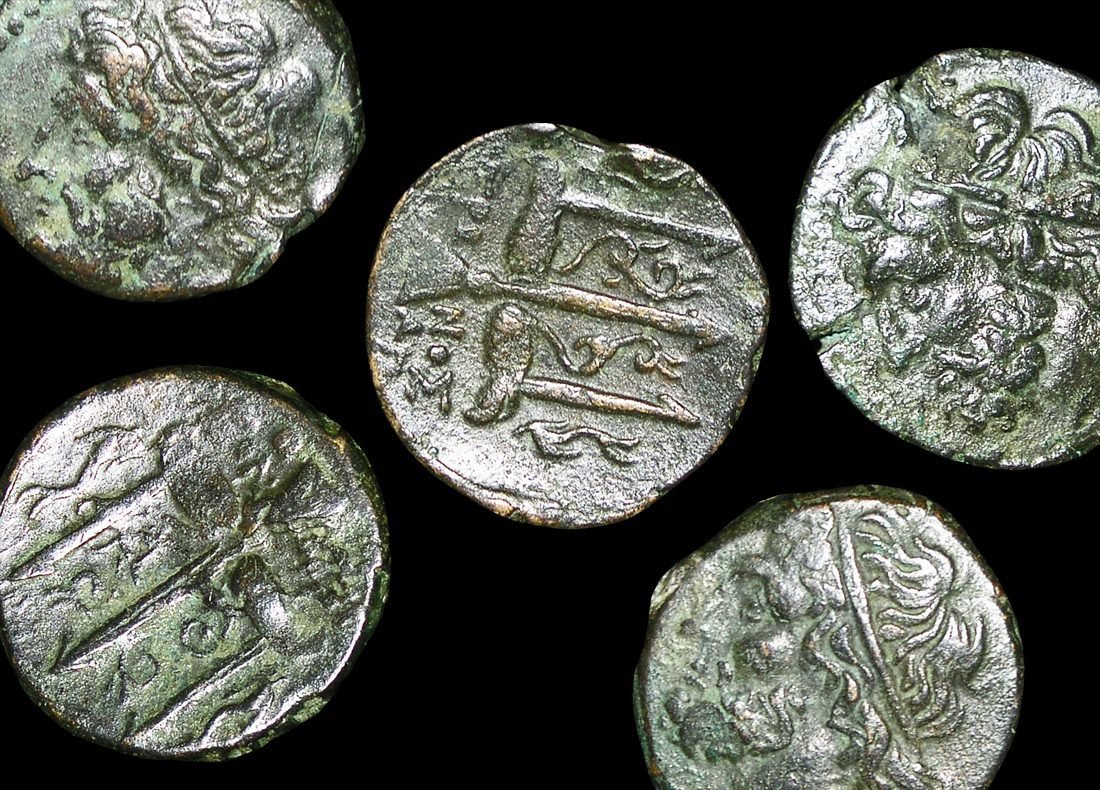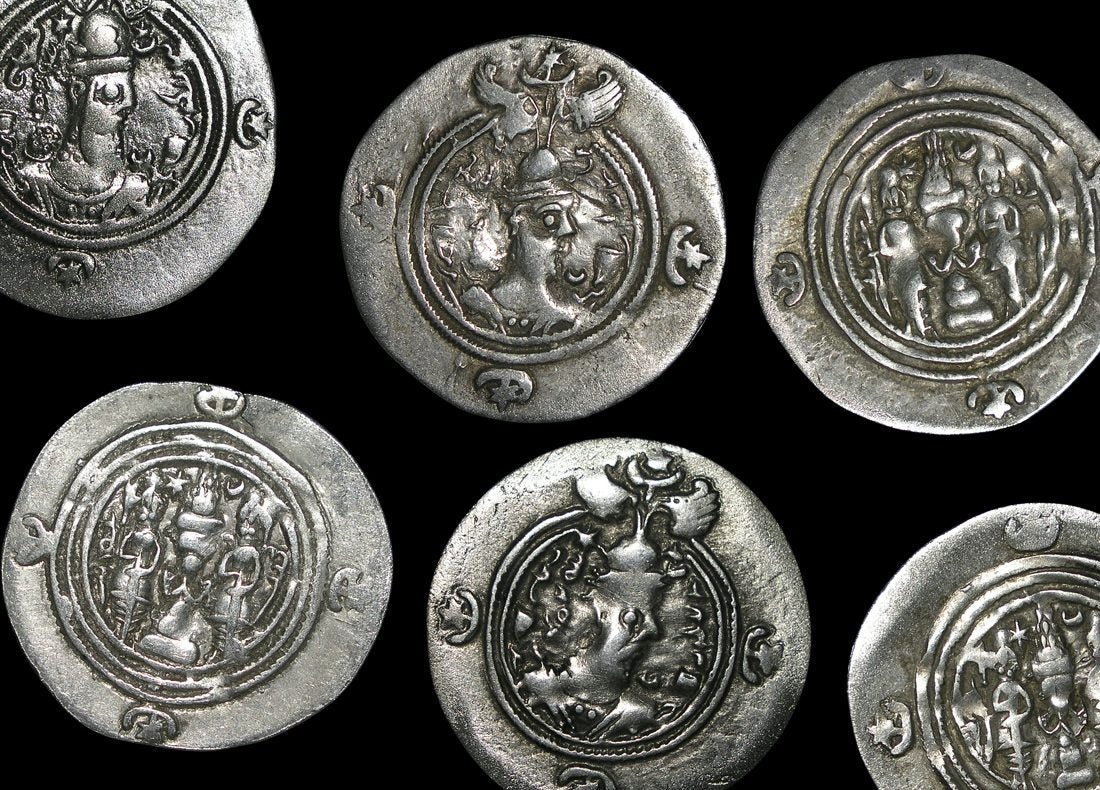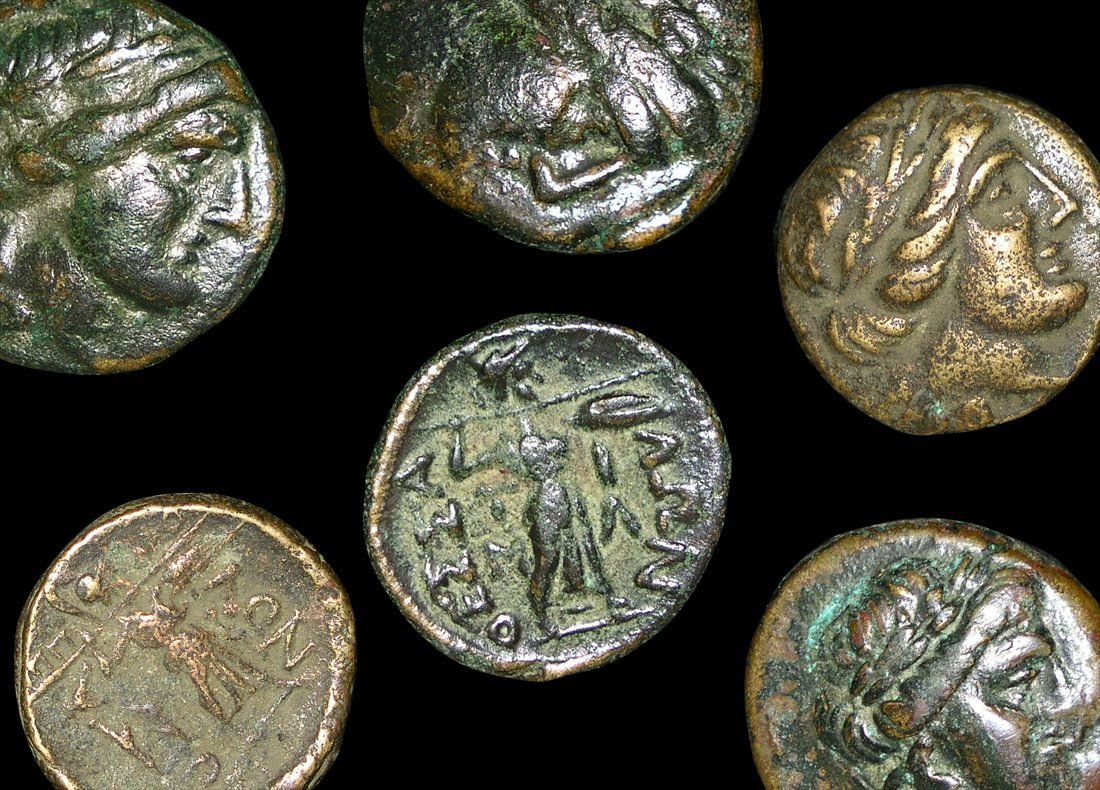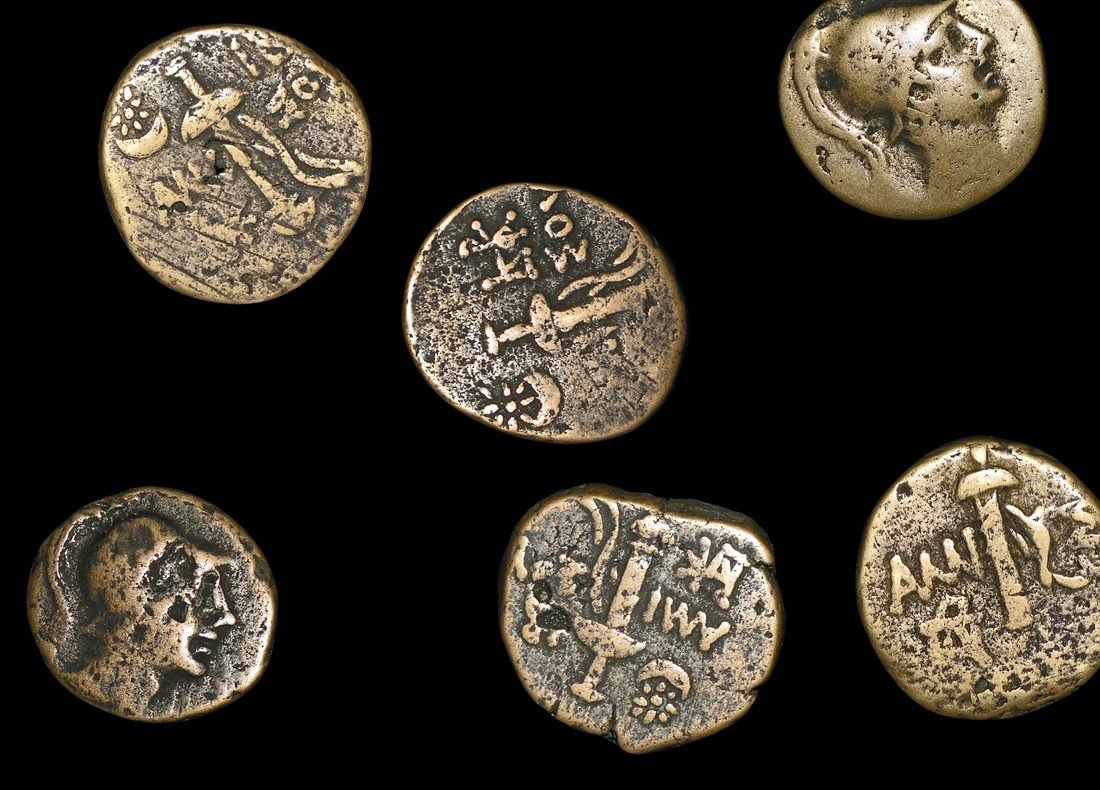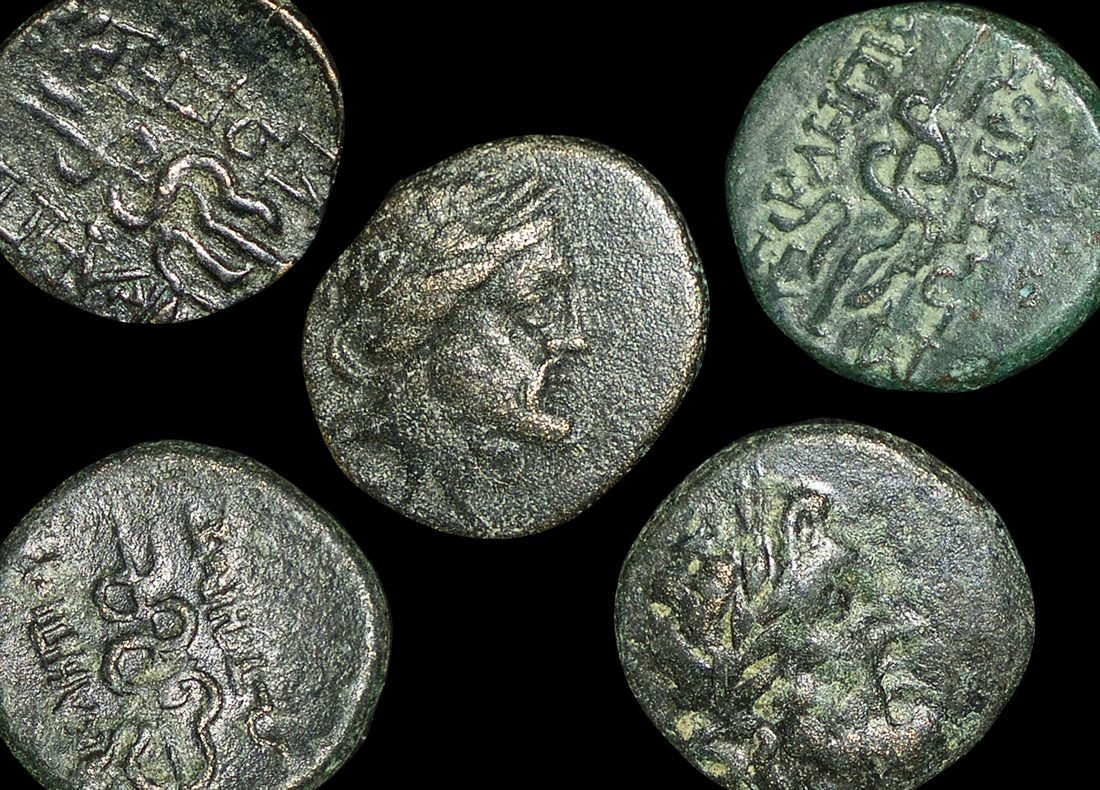 Image 1 of 1
Image 1 of 1


Bronze Coin from Pergamon with Asclepius (about 2150-2250 years ago)
This bronze unit was minted in the prosperous Hellenistic city of Pergamon in western Asia Minor during the 2nd century BCE. As part of the Kingdom of Pergamon under the wealthy Attalid dynasty, this small coin would have been used for everyday transactions by citizens living in one of the ancient world's most culturally and intellectually significant cities.
Coin Description:
Front side: Likely features the head of Asclepius, god of healing and medicine, portrayed with a mature bearded face and possibly wearing a laurel wreath
Back side: Could display Asclepius' symbol of a staff with a serpent coiled around it (the Rod of Asclepius), or other related imagery such as a serpent alone or medical implements
Technical Details:
Bronze alloy composition
Small bronze denomination (exact name varies by modern reference)
Reference numbers not visible in description
Condition not specified (likely Fine, with expected wear)
Minted approximately 200-100 BCE
No certification mentioned in description
Historical Significance:
This coin was minted in Pergamon when the city was renowned for its magnificent "Sanctuary of Asclepius," a healing center that attracted patients from throughout the Mediterranean world. Visitors to this ancient medical complex would bathe in sacred springs and sleep in special chambers where Asclepius would supposedly appear in their dreams to prescribe treatments. The sanctuary's medical tradition was so significant that Galen, who became the most influential physician of antiquity and personal doctor to Roman Emperor Marcus Aurelius, trained and practiced here for many years. This coin represents the intersection of religion and medicine in the ancient world, reflecting how healing was viewed as both a scientific and spiritual practice. Pergamon itself was famous not only for its medical tradition but also for its spectacular hillside architecture, vast library (second only to Alexandria), and the magnificent Great Altar of Zeus, now reconstructed in Berlin's Pergamon Museum.
This bronze unit was minted in the prosperous Hellenistic city of Pergamon in western Asia Minor during the 2nd century BCE. As part of the Kingdom of Pergamon under the wealthy Attalid dynasty, this small coin would have been used for everyday transactions by citizens living in one of the ancient world's most culturally and intellectually significant cities.
Coin Description:
Front side: Likely features the head of Asclepius, god of healing and medicine, portrayed with a mature bearded face and possibly wearing a laurel wreath
Back side: Could display Asclepius' symbol of a staff with a serpent coiled around it (the Rod of Asclepius), or other related imagery such as a serpent alone or medical implements
Technical Details:
Bronze alloy composition
Small bronze denomination (exact name varies by modern reference)
Reference numbers not visible in description
Condition not specified (likely Fine, with expected wear)
Minted approximately 200-100 BCE
No certification mentioned in description
Historical Significance:
This coin was minted in Pergamon when the city was renowned for its magnificent "Sanctuary of Asclepius," a healing center that attracted patients from throughout the Mediterranean world. Visitors to this ancient medical complex would bathe in sacred springs and sleep in special chambers where Asclepius would supposedly appear in their dreams to prescribe treatments. The sanctuary's medical tradition was so significant that Galen, who became the most influential physician of antiquity and personal doctor to Roman Emperor Marcus Aurelius, trained and practiced here for many years. This coin represents the intersection of religion and medicine in the ancient world, reflecting how healing was viewed as both a scientific and spiritual practice. Pergamon itself was famous not only for its medical tradition but also for its spectacular hillside architecture, vast library (second only to Alexandria), and the magnificent Great Altar of Zeus, now reconstructed in Berlin's Pergamon Museum.



